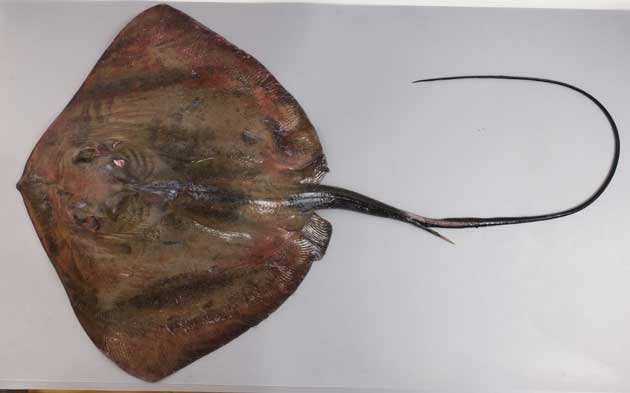The yellow stingray's Latin name is Dasyatis bennettii, and its foreign name is Bennett's Stingray. It is a fish of the family Stingray and the genus Stingray.

The yellow stingray (Dasyatis bennettii) was first described in 1841 by German ichthyologist and physiologist Johannes Peter Müller (1801-1858) and German doctor, pathologist and anatomist Friedrich Gustav Jakob Henle (1809-1885) in the Systematische Beschreibung der Plagiostomen, it was first recorded as "Bennett's triangle ray (Trygon bennettii)" based on individuals collected from the southwest coast of Japan.
Yellow stingrays often bury their bodies in the sand, leaving only their eyes and breathing holes exposed, and their tail spines are poisonous. They feed on various benthic animals such as shrimps, crabs, shellfish and fish, have seasonal migratory habits, and live in water depths of 5-100 meters.
Yellow stingrays mainly reproduce in spring and summer, showing ovoviviparity. The embryos initially feed on egg yolk, and then indirectly absorb uterine fluid rich in mucus, fat or protein through special structures, thereby obtaining additional nutrition from the mother. They have a unique embracing pairing behavior. Generally, they breed in brackish water and shallow seas at the downstream estuaries of the coast. After absorbing the yolk, the young fish grow in the estuaries and along the coast.
Listed in the "Red List of Endangered Species of the World Conservation Union" (IUCN 2007 ver 3.1) - Data Deficient (DD).
Listed in the second level of the "List of National Key Protected Wildlife in China". (Only for land-locked populations)
Protect wildlife and eliminate game.
Maintaining ecological balance is everyone's responsibility!